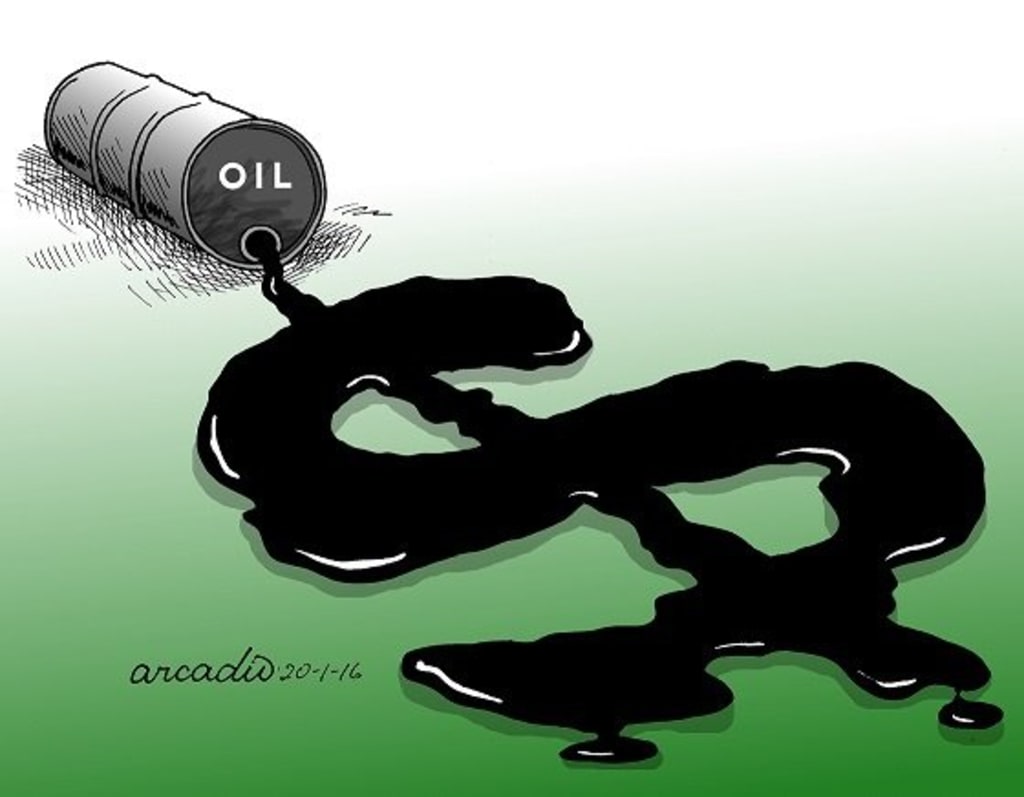U.S. Petro Dollar
How Petrodollars Affect the U.S. Dollar

Petrodollars are not a currency; they're simply U.S. dollars that have been exchanged for crude oil exports. The term rose to economic and political prominence in the mid-1970s amid growing interdependence between the U.S. and crude oil exporters.
Foreign oil exporters' reliance on the U.S. dollar as the principal means of exchange and store of value reflected the dollar's already established role as the global reserve currency, which continues without serious challenge to this day.
The dollar's global stature and wide use stem from the U.S. economy's leading global role and its openness to foreign trade and investment.
1
These advantages proved irresistible to oil exporters, and their reliance on the dollar in turn extended its dominance.
Rise of the Petrodollar
The Bretton Woods system of fixed currency exchange rates tied to gold through the U.S. dollar collapsed in 1971 because the global economy and its demand for safe assets outgrew the available supply of bullion.
2
3
Only the dollar could realistically fill that void, and as the global supply of dollars grew amid U.S. trade and budget deficits, so did the accumulation of petrodollars earned by oil exporters benefiting from sharply higher crude oil prices.
4
Exporters accepted dollars because they had no alternative: it was the currency of their leading customer and, even more importantly, the currency of international trade and finance. Growing mutual dependence led to deals between the U.S. and Saudi Arabia setting the terms for the reinvestment of Saudi petrodollars in U.S. Treasuries in 1974 and for U.S.-run development projects in Saudi Arabia in 1979
The development of oil and gas reserves outside the Middle East starting in the late 1970s eventually spread the petrodollars around to new exporters like Norway, whose sovereign wealth fund was worth $1.4 trillion at the end of 2021 and held nearly 1.5% of all publicly listed global equities
Returns on Petrodollar Recycling
The most important benefit from the reinvestment of petrodollars in the U.S. and abroad was that it allowed business to proceed as usual. Foreign oil exporters could keep supplying crude and get paid in the most useful currency, while the U.S. maintained its economic, financial, technological, and military pre-eminence.
The rise of the petrodollar forced the U.S. to share political and economic power with the developing countries supplying its energy. In addition to development projects and cross-border investment flows, the petrodollar also financed U.S. weapons exports that accelerated the Mideast arms race.
5
The petrodollar extended the dollar's global dominance by fueling demand for dollar-denominated investments outside the U.S., including in the burgeoning
Doomsday Predictions Vs. Reality
There's an inherent tension between global demand for investable assets denominated in a widely used currency and the likelihood that issuing such liabilities in volume over time will dent the issuer's creditworthiness, eroding confidence in its currency. The conundrum, first outlined by economist Robert Triffin in 1960, is now known as the Triffin Dilemma.
10
In practice, the advantages of a dominant reserve currency accrue to users immediately, while the drawback Triffin identified manifests at a glacial pace with unpredictable timing. The British pound accounted for 30% of global foreign exchange reserves as late as 1968, nearly a century after the U.S. supplanted the U.K. as the largest global economy.
11
As of 2020, the U.S. economy still accounted for nearly a quarter of global GDP and was more than 40% larger than its nearest rival.
12
It also had by far the world's largest current account deficit.
13
As Triffin noted, a large current account deficit is unavoidable for the issuer of a reserve currency.
Global economies continue to evolve in ways that can ease stresses on the system. For example, the U.S. became a net oil and petroleum products exporter in recent years, reducing the flow of "petrodollars" in favor of plain old dollars accruing to oil producing states like Texas.
14
The reshoring process, which gained extra impetus amid supply chain disruptions caused by the COVID-19 pandemic, could eventually slow or even reverse the growth of the U.S. trade deficit.
The Bottom Line
The rise of petrodollar oil export earnings reflected and further entrenched the primacy of the U.S. dollar in global trade and investment. Big gains in domestic energy supply have diminished the U.S. economy's reliance on oil imports, and petrodollar reinvestment. Meanwhile, the global economy remains deeply dependent on the dollar as a reserve currency.
15
SPONSORED
Open A Trading Account in Under 5 Minutes
Open a trading account in under 5 minutes and join 900,000 others globally trading long or short on oil CFDs, and access 1000+ other CFD products over assets like forex, gold, indices, and shares with an award-winning broker. Trade oil from 0.4 spreads on Vantage's RAW account, and access free education and trading tools with 24/5 phone support. Learn more about trading with Vantage and get started today.
About the Creator
Enjoyed the story? Support the Creator.
Subscribe for free to receive all their stories in your feed. You could also pledge your support or give them a one-off tip, letting them know you appreciate their work.





Comments (1)
Buy time petrol prices are increasing. https://www.panoramacharter.bid/